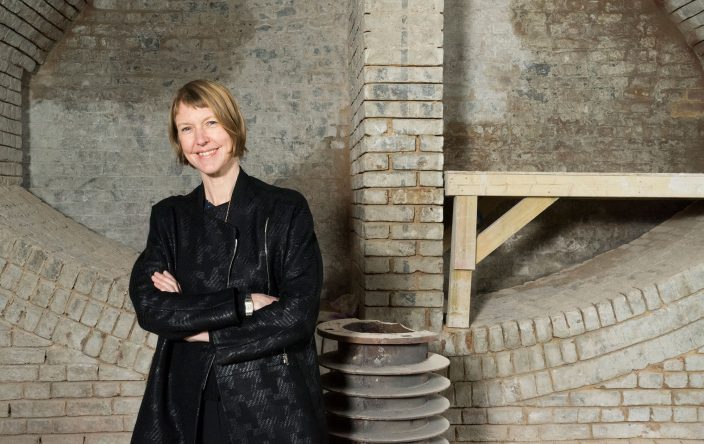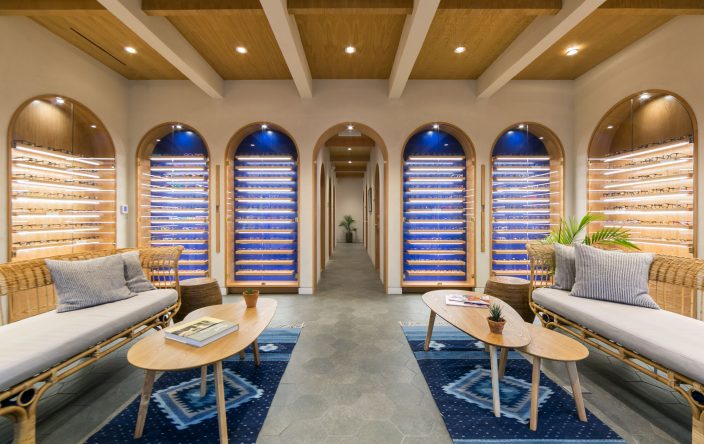
The 10 Most Important Lessons Learned in 25 Years of Architecture Practice
This article is an expansion on one part of our interview with Craig Applegath, Founding Principal of DIALOG’s Toronto Studio. The architect spoke from his experience of running a 150-person practice and listed 10 tips for archipreneurs interested in starting their own business. We think this list is inspirational and so we are sharing it with you here.
by Craig Applegath
When I first started my own practice I thought everyone wanted to run their own practice. It turns out not. Most people just want to work in a great practice run by someone else. But for those who are real archipreneurs – and you know who you are – there is nothing so thrilling and fun as starting your own business; and nothing so scary and anxiety producing as starting your own business! They are the flip side of the same coin. But in terms of general advice for people starting their own practice or business here are ten key lessons I have learned over the past twenty-five years of practice:
#1 – Design Your Life
Before starting your own business, make sure that starting a business is the right thing for you, and figure out what kind of business you want to be in. One of the best ways to do this is through something you are probably pretty good at already: design thinking.
However, to really see design thinking effectively applied to designing your career, reading Bill Burnett and Dave Evans’ book Designing Your Life, is one of the first things you should do. (I am actually using it right now to design the next decade of my career.)
One of the things that they show you how to do is ask the right questions so you can solve the right problems. The last thing you want to do is start a business that is smart as a business idea, but does not succeed in helping you develop the career that will be most fulfilling to you, and that you will be most successful in.
#2 – Aim to Make a Difference
I think to be successful you need to lead a meaningful, purposeful life – that is, a life that provides you with a powerful and meaningful raison d’etre for what you do. As part of designing your life you will be thinking a lot about this. You don’t want to get into late middle age and wonder what the hell you have done with your life!
Life is short and needs to be lived with passion and intent. Having the goal of making money, or winning design awards, as your life’s purpose is a good recipe for a mid-life crisis. You have to make money to succeed, and winning design awards will probably help you succeed, but they should be understood as a means to an end.
And that end is something you need think very carefully about. Some purposes that serve people well include increasing the wellbeing of your community; providing your clients with consulting that makes a real difference to their success; designing projects that reduce environmental harm; and designing projects that increase the quality of life for the people who will use the project.
As designers, we have a wonderful opportunity and responsibility to create things that improve the lives of others, and this provides wonderful opportunities for practitioners to find very rich and meaningful careers.
#3 – Develop a 20-Year Plan
Whenever I tell young interns this, they seem incredulous, and typically tell me that they are having a hard enough time figuring out what they want to do over the next five years, let alone twenty years. But there is a very good reason for having a 20-year plan. A 20-year plan is really the length of a well-thought-out career, and therefore, if you are looking to plan a meaningful career, you will need to think about it in a 20-year time frame.
This is in no way at odds with the fact that most professionals change jobs or positions on average every five years. A job is not a career. A job is simply a place of employment with defined roles and responsibilities. In designing a career, you should be looking at it as a life’s project, and it having a beginning, middle, and end. The beginning of your career provides you with the knowledge and expertise you will need to be successful in your mid-career. And mid-career experience provides you with the foundations to build your legacy in your late career.
The objection I hear most often to creating a 20-year plan is that “I might change your mind about your career direction as you go along.” Actually, you will most likely change your mind as you go along, and you should make a point of taking stock each year about whether or not your 20-year plan still makes sense. But the planning process is still very useful.
One of the most important things a 20-year plan does is that it provides your unconscious brain with a map of what is important, and once your brain has this map, everything in the environment that in any way relates to your plan will be picked up by your brain and brought quickly into focus.
In other words, it is a way of your brain cutting through the clutter and noise of everyday life to make sense of what is important to you and what is not.
#4 – Business 101
Most architecture schools do not provide you with a good grounding in the business aspects of architecture practice. So, before you quit your day-job to start your own practice, it’s probably worth taking a continuing-end course at your local college or university on how to start and run a small business. It will teach you the basics of sales, marketing, bookkeeping, and managing your team.
I would also recommend taking a course in negotiation. Architects, for some reason, are typically terrible negotiators, especially in negotiations for fair compensation for their services! And you will also want to start building yourself a library of go-to business books. One of the best books you can read on how to lead, manage, and develop business for a professional service firm is David Maister’s book, Managing the Professional Service Firm.
This is certainly my go-to bible for understanding how to successfully lead and manage a design practice. I don’t think there is any better advice out there then Maister’s wise and insightful guidance.
#5 – Read, Read, Read
I think that one of the most important ingredients for success is to be constantly at the intersections of culture, science and technology, and business, and to do so you will need to be constantly reading – reading books, blogs (like Archipreneur), newspapers, and journals of all sorts. You need to read both broadly and deeply. You need to understand the bigger world around you; but you also need to maintain your expertise in whatever your specialty niche is (and you will want to have at least a couple of specialty niches!).
So what is on my current reading list this month? In addition to the standard journals and mags, I am reading: Before Happiness, by Shawn Achor; Hope in the Dark, by Rebecca Solnit; Designing Your Life, by Bill Burnett and Dave Evans; Surviving the 21st Century: Humanity’s Ten Great Challenges and How We Can Overcome Them by Julian Cribb; The Inevitable: Understanding the 12 Technological Forces That Will Shape Our Future, by Kevin Kelly; and The Subtle Art of Not Giving a F*ck by Mark Manson.
#6 – Find a Blue Ocean
This is a reference to W. Chan Kim and Renee Mauborgne’s book, Blue Ocean Strategy, that suggests that entrepreneurs look for business opportunities in uncontested waters – blue oceans – rather than competitive, bloody waters – red oceans. This is good advice if you can find your own blue ocean. One thing is for sure, in North America and Europe, architecture, urban planning, and design are mature markets with limited opportunity for new traditional practices.
If you are starting a traditional practice, you will be up against dozens, often hundreds of competitors who will have much deeper portfolios and much broader client networks than your new business will have. So you will need to offer something that really differentiates you from your competitors.
Maybe you will be the new expert in computational design? Maybe you can team up with an emerging builder to become a niche design-build practice? Maybe you will be a developer-architect? Whatever you plan to do, you need to develop a “secret sauce” that your competitors will find difficult or impossible to copy.
When I started my own practice just as the Internet was emerging, I positioned myself as a “virtual architect” and used the Internet to pull together consultants form all over North America to do projects – mostly buddies from grad school. But it sounded cool, and got me some good speaking gigs at conferences, and conferred a degree of uniqueness on my practice that got me noticed.
#7 – Build and Support Your Network
I have not met any successful entrepreneurs who do not have a deep network of people they trust and can rely on. Networks are for support; networks are for leads; networks are for advice; networks are for collaboration. Networks are the important bonds that allow you to see and realize potential opportunities. One of the best guides to developing your network is Harvey Mackay’s book, Dig Your Well Before You’re Thirsty. And one of the most important lessons in Mackay’s book is that networks are not to be exploited, but rather supported.
You build a network of people whom you will try to support, and care about, and they will in turn do the same for you. I can’t say enough about how important building a good network is. Without a good network success will be virtually impossible. And make sure your network is made up of smart, decent, and honest people, because as John Rohn once said, “You are the average of the five people you spend the most time with.”
#8 – Build Great Teams
Part of building a good network will be spotting great talent for your team. Unless you plan to work as a sole practitioner, you will need to build a great team to be successful. Volumes have been written on how to recruit, manage, and inspire great teams, and you will need to familiarize yourself with the field of management and leadership if you are to be successful. From my experience of leading both a small and a larger practice, there are three important aspects of building and leading great teams that you will want to focus on.
The first is talent spotting, long-term networking, and relationship building with future potential team members. The second is selecting and hiring the right team members. And the third is leading, inspiring, and nurturing your team. For the long-term growth of your practice, talent spotting will be one of your most important tasks – and one not often talked about in management and leadership literature. How do you spot great future team members? You always need to be looking!
When you are at industry conferences; when you are giving public presentations; when you are at professional industry events of any kind, you should be constantly on the lookout for future talent. And when do you spot bright, able, ambitious, innovative people, make a point of connecting with them and building a relationship. Make them an important part of your network. At some point in the future the stars may align and you may be able to invite them to be part of your team. Talent is a long game!
#9 – Take Care of Yourself
You will not be able to succeed in any new venture unless you are physically and mentally up to the challenge – and can maintain your physical and mental stamina over the long haul. You will be pulled in a thousand different directions when you start your practice, and you will continue to have a private life with its own demands and stresses.
So you will need to learn how to take care of yourself to manage your energy, and your physical and mental health. There are two very important things you should be doing, even when things are crazy busy – in fact especially when things are crazy busy.
First, you should set aside a minimum of an hour at least three to four times per week for exercise – some combination of cardio and resistance weight training.
Second, learn how to meditate and do so each day. If you are new to meditation try the Headspace App on your iPhone or Android. I have talked with a number of entrepreneurs who say they could not function without exercise and meditation, and most accounts of successful entrepreneurs I have read have said the same.
#10 – Be a Rational Optimist
Of the list of ten lessons learned, this lesson may be the most important. My personal experience over the past 25 years of practice has taught me to make every possible effort to see failures and setbacks as doors to new insights and opportunities that one would not have otherwise been able to see.
As a personal coach I know asks when one of her clients runs into a particularly difficult setback: “What is the gift provided by this situation that you would not have otherwise had access to without the setback?” This is a powerful re-framing question because it cleverly redirects your brain away from the negative emotions associated with the setback, and forces it to start exploring new opportunities that may exposed by what you might otherwise simply see as a failure. This turn of mind is what I like to call rational optimism – an optimism founded on the realities of a difficult set of circumstances, where you are willing to explore the positive opportunities that may be inherent in those circumstances.
For example, like most architecture firms in North America, we are experiencing significant fee competition based simply on the supply and demand for architectural and engineering services. This fee pressure is making it ever more difficult to maintain the high levels of both expertise and client service that our firm is known for. Instead of cutting both service and expertise to remain fee competitive, we have instead been heavily investing in various design and production technologies that will allow us to be more effective and productive and even improve client service. So as you face significant challenges and even failures, keep asking yourself: “What’s the gift?”
There are no guarantees of success in this world, and starting a business venture in the design sector is especially fraught with challenges. But your chances of success will most likely be greater if you look for ways to deploy, in your own fashion, these ten principles. Most importantly, try to be a rational optimist. Business, like life, is one challenge after another. Do your best to look at these challenges as opportunities to learn and grow. So always ask yourself when you are faced with a tough challenge, or a failure, “what’s the gift?” Good luck and have fun!
***
Craig Applegath is the founding principal of DIALOG’s Toronto Studio, and a passionate designer who believes in the power of built form to meaningfully improve the wellbeing of communities and the environment they are part of. Since graduating from the Graduate School of Design at Harvard University with a Master of Architecture in Urban Design Craig has focused his energies on leading innovative planning and design projects that address the complex challenges facing our communities, as well as on his advocacy of sustainable building design and urban regeneration and symbiosis.
Craig’s area of practice includes the master planning and design of institutional projects, including cultural and museum, post secondary education, and healthcare facilities. In addition to his professional practice responsibilities, Craig speaks about his research and design explorations at conferences and workshops internationally. This has included recent presentations at conferences in Prague, Munich and Beijing.
Craig was a founding Board Member of Sustainable Buildings Canada, and a Past President of the Ontario Association of Architects. Craig has lectured or taught at Harvard, the University of Toronto, the University of Waterloo, as well as at many professional and sector related conferences around the world. In 2001 Craig was made a Fellow of the Royal Architectural Institute of Canada for his contributions to the profession.
Join our Newsletter
Get our best content on Architecture, Creative Strategies and Business. Delivered each week for free.

JOIN THE
ARCHIPRENEUR ACADEMY
- 9 Stage Studio Growth Roadmap
- Library of In-Depth Courses
- Checklists and Workbooks
- Quick Tips and Tutorials
- A Supportive Online Community















